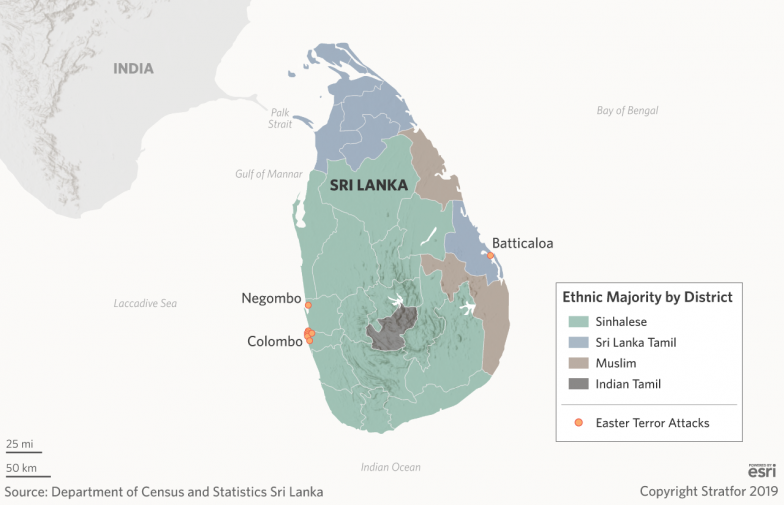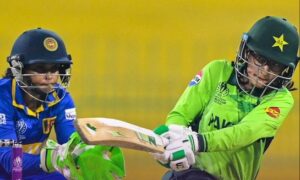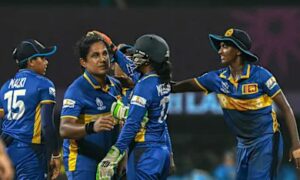
File Picture
If cracking the UPSC civil service examination is your objective please understand that it’s a ball game different from any other competitive examination; because it is a test of your ” constructive” interest in diverse subjects, cultures and societies, appreciation of facts and issues of current importance- national and international, your capacity to think,analyse logically, to form a definite reasoned opinion and put it across in writing as well as in a discussion.
This is because these traits determine your potential ability to decide assess and judge complex situations and thus constitute leadership qualities essential for discharging multifarious administrative responsibilities and especially exercising powers under the extant laws rules and regulations affecting the lives of the citizens as a member of the elite civil service cadres of the Central government.
To help you- the IAS aspirants to prepare on these lines, https://impactnews.in begins this periodic column as the first of its analysis of the country situation in our neighborhood and in line with India’s “neighborhood first policy” and on ” need to know” basis , that is for the UPSC General studies.
We begin with Srilanka in the post 21 April Easter Sunday devastating and simultaneously organised ” fedayeen” terrorist attacks on three churches at Colombo,Negombo and Batticaloa and four luxury hotels which left 258 dead and over 500 severely injured and maimed for life and the Srilankan nation and its Indian neighborhood shocked. The fact that this was about the first such terrorist outrage in the region for which the ISIL- the Islamic state of Iraq and Levant claimed responsibility almost instantaneously added to the gravity of the matter as a threat to regional peace and security and not just to the Island nation. For proper appreciation let us look at the basic facts and issues of Srilanka, a country of great strategic importance to India .

1.00. Area 65610 sqkm. Population 208.36 million ( as per the UN projection for 2020) comprising about 70% Sinhalise-mostly Buddhist, 13.6% Tamils, 9% Muslims majority of whom speak Tamil and the rest Sinhalese and 7.4% Christians of Sinhalese and Bergher origin meaning persons of mixed European descent . The ethnic Sinhalese form 75% of the population.
2. Economy. GDP as per nominal 2018 US$ terms is $92billion ,percapita GDP US$4265 and holds 71st rank in Human Development index HDI of the UN- the highest in South Asia as compared to India’s131st rank in the same. In terms of the PPP that is, the purchasing power parity the economic situation of Srilanka is better as given below:
GDP. US$ 292 billion and per capita GDP- us$ 135000, the highest in South Asia.
3. Structure composition of the GDP: Agriculture 9%, industry 30%, services 61%; the economy has been growing since 2016 at about 4% annually which is considered robust given its strong base in Tea and coffee plantations,spices and tourism.
3. Srilanka – Ceylon during the colonial period came under the British control as a consequence of the consolidation of the British Raj in India and was made an independent colony separated from Madras presidency in 1802 and emerged as an independent nation state in 1948 and a Republic in 1972. However Srilanka’s quest for a stable polity is still continuing :presently it is an ” unitary semi Presidential constitutional Republic with unclear distribution of powers between the President Maithripala Sirisena and the Prime Minister Ranil Wickremesinghe which by causing internal tension within the system often render it unresponsive to the situation and even unworkable at times as evidenced during the Easter crisis.
Given the fact that Srilanka is a multi ethnic, lingual and religious country and the Tamils, ” a geo political minority” meaning that though a minority of the total population, they constitute majority in northern and eastern parts having access to the Sea makes the Tamil case for self rule or autonomy appears as legitimate assertion of their distinct linguistic and Hindu religious identity.

Courtesy : Stratfor
The acceptance of this demand is embodied in the 13 th constitutional amendment providing for devolution of power to the Tamil majority provinces. However lack of political will on the part of the Sinhalese dominated State which favours an unitary and not a federal form of government has been responsible for its slow and tardy implementation and the main cause of unrest in Tamil regions.
It may be recalled that right from 1948 the failure of the Srilankan state to accommodate the legitimate aspirations of the Tamil minority led to a prolonged constitutional crisis and got intensified even after Srilanka became a Republic in 1972 that led to 26year long civil war from 1983 which ended in 2009 with the defeat of LTTE- Liberation Tigers of the Tamil Eelam (Eelam meaning Homeland) fighting for Tamil freedom. For the Sinhalese majority it was a pyrrhic victory as the of Tamil autonomy continues to be a live issue now which must be resolved for enduring peace and progress of Srilanka.
The Easter outrage has added a new dimension to this complex situation. Till now the Srilankan Muslims- though mostly Tamil speaking remained largely uninfluenced by the Tamil movement and at times sided with the government. The Easter terrorist attacks by a group linked to Srilanka’s home grown National Thowhith Zamat aided by the dreaded ISIL-the Islamic state of Iraq and Levant which claimed responsibility for the outrage have changed this Sinhala Muslim equation possibly once for all; because the state has to counter and eliminate the spread of political Islam first while making efforts to pacifying the Christians and meeting the Tamil demand. Indeed the government of Srilanka is in a bind and it will be interesting to see how it meets these multiple challenges.
Statesmanship suggest a resolution of the Tamil demand as the first step to strengthen the state capability to deal with the ISIL threat and coordinated security measures with India because of clear connection between the Srilankan terror groups with some Islamic extremist groups in South India and thus provides a durable base for India Srilanka cooperation vital for peace and stability of South Asia. It is also seen that China is unlikely to stand unequivocally with Srilanka on this issue like India because of her high stake in China Pakistan Economic Corridor- CPEC project and unclear stand on the” global terror”.
The Easter outrage has some disturbing features: first, the deep influence of the neo wahabi Islam among the well off segments of the Srilankan Muslims contrary to the conventional view that mainly the poor among the Muslims are attracted to the same and second,its links with similar jehadi groups in South India and Pakistan.This suggests that Srilanka might as well be the next springboard for ” terrorist attacks” in SouthIndia where a good part of India’s strategic scientific research and technological assets are located. Next the suicide attacks were not entirely unforeseen because as early as Nov 2016 the Srilankan justice Minister warned that “more than 24 Sri Lankan nationals had joined the ISIL and two of them were killed in a coalition air strike in Syria earlier in 2015. To break the ISIL terrorist Link is the real challenge before Srilanka and its Muslim civil society keeping in view the experience of the Rohingya Muslims in Myanmar a Buddhist majority country because in Asia religious extremism has been known to be infectious.
The options before the Srilankan state are however limited as while eliminating the terrorist groups ruthlessly it has also to ensure that the Muslims as a whole are not alienated as they are important players in trade and industry; and hence the need for promoting the liberal Sufi Islam with state support.
More importantly the Sinhalese majority must show political maturity in resolving the just demand of the Tamils which alone could build a pragmatic, pluralistic Srilankan national identity. And for this to happen Srilanka needs a political will to do away with its present dysfunctional system with no clear demarcation in the powers exercisable by the President and the Prime minister which was the primary cause of the inadequate response to the terrorist threat and opt for a decentralized democracy capable of meeting the aspirations of Srilanka’s diverse population. This is the only way for the Island nation to reconcile her history with demography.


















